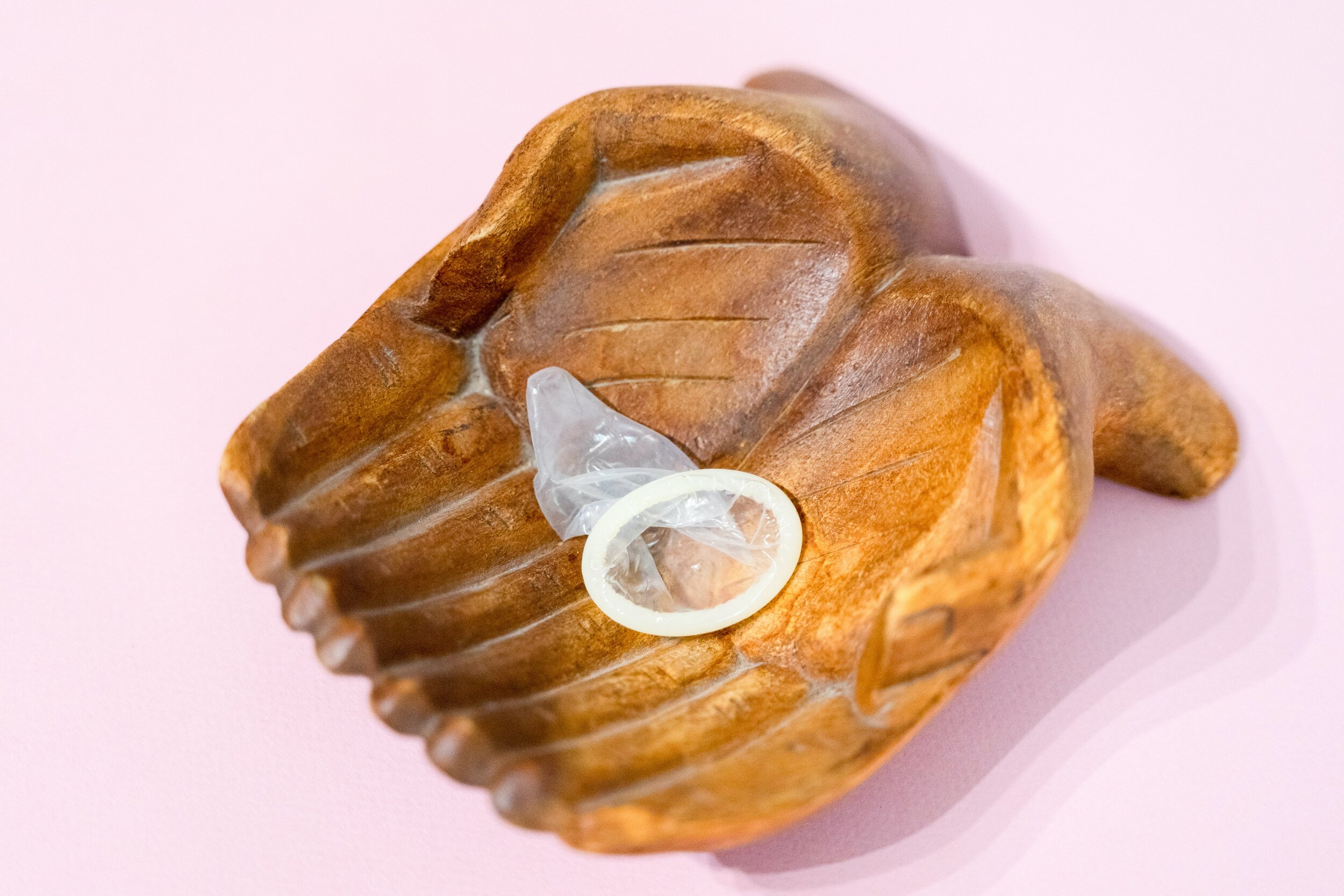History Of The Condom
Photo by Dainis Graveris on SexualAlpha
Since the beginning of humanity, sex has always been a source of risks. Believe it or not, condoms have been used for millennia to control our fertility and protect ourselves from sexually transmitted diseases.
Let's explore the fascinating evolution of condoms across the ages!
Ancient condoms
All over the world, evidence showed that humans have commonly protected their genitals with some sort of tool. Materials varied from silk, linen, cotton, papyrus, to gold or banana leaves, and were treated with herbs or chemicals.
Many stories and legends talk about these protections. One of them is the Greek myth narrating how the King Minos of Crete preserved his mistresses by inserting a goat bladder into their vaginas during intercourse.
On the other side of the world, the Zulu of South Africa were using penile sheaths, and in Ancient Egypt (around 3000 BC.), hieroglyphs showed men wearing linen sheaths on their penises, made of sheep intestines or pork bladder.
Early condoms: 1400s & 1500s
During the deadly Syphilis epidemic that devastated Europe, an Italian doctor Gabriele Falloppio proposed the use of linen, dipped in a medicated solution and tied with ribbons, to prevent the illness. This early condom gave satisfactory results after being tested on 1100 men who didn't get infected.
Pre-modern condoms: 1600s & 1700s
In the 18th-century, brothels were openly selling condoms to their customers. The famous print of Casanova blowing a condom before intercourse with prostitutes pictures so well how accepted and used was the condom in the middle and high social classes!
Although, it was still too expensive for the average working-class person: a condom could cost as much as a week's wage - according to James Edmonson, chief curator of Dittrick Medical History Center.
Modern condoms: 1800s & 1900s
1839: Goodyear and the vulcanization process
In 1839, the American inventor Charles Goodyear dropped Indian rubber mixed with sulfur (which removes the stickiness of the rubber) on a hot stove. A lucky accident that led to a revolution for the rubber industry: we had finally found a way to make rubber elastic!
From that point onwards, the mass production of condoms was made possible.
1873: Anthony Comstock forbids contraception
But because of their relation to sexuality and birth control, condoms became a target for an American anti-vice activist, Comstock.
The Comstock Act of 1873 forbids to produce, sell or own any "obscene" object and the spread of any information about birth control methods in the US.
As a result, this interdiction led to an exploding rate of STDs across the country.
1914: World War I
Around 1914, Margaret Sanger created the birth control movement in the US, fighting for women to have access to contraception.
At the same time, when the war started, condoms became extensively available as military health was a national priority. Indeed, similarly to the time of the English civil war, soldiers frequented brothels and got massively infected by STDs.
The 1920s & 1940s: the growth of a consumer economy
The rise of automation machines and the vulcanization of latex changed everything we knew about condoms. It resulted in the mass production of better quality devices.
In 1937, as the US Food and Drug Administration labeled condoms as a medical device, they were subject to stricter safety requirements. As a matter of fact, after checking all condoms available on the market, 75% of them were found to be unsafe to use according to the new regulations!
1939: World War 2
Once again, films and posters were massively shown to soldiers in the hope to keep them away from venereal diseases. And by extension, women.
In the booklet The prevention of venereal diseases distributed to troops in the US, it was said that "the only sure method of not contracting a venereal disease is twenty feet of space"... between you and any woman.
Condoms established themselves as the main source of preventing STDs, and became an integral part of soldiers' lives - even after the war.
The 1960s & 1970s: rising freedom
In 1960, the first oral contraception pill appeared on the market!
Contraception methods became associated with freedom, particularly during the boom of the sexual revolution.
Meanwhile, the market of condoms set off again when the Comstock Law was finally abolished in 1965!
The 1980s & the HIV epidemic
In 1981, the first cases of AIDS appeared in the US. With another epidemic, the condom was once again the only way to protect people from STDs during sexual intercourse.
The sales exploded - like never before - along with education campaigns on TV and radio.
What about today?
Nowadays, while a myriad of diverse contraception methods is available on the market, there is less fear of dying from STDs.
Indeed, research demonstrates that "from 1999 to 2010, the cumulative sexually transmitted disease-related mortality rate decreased by 49%."
In 2017, a survey done on 2000 young people by Public Health England shows that 1 in 10 sexually active 16-24 year olds have never used a condom!
But there is one thing that History confirms: condoms (or some sort of condom-like devices) have been used as the main tool to prevent venereal diseases and pregnancy, for millennia, all over the world.
And they still are today the best way to remain free from most STDs. Stay safe ♥︎











Let's be honest: what is the first thought that comes to your mind when you hear about scheduling sex? Boring. Laborious. So-not-sexy. Yet, many sexologists swear by this practice to cultivate intimacy within a relationship.